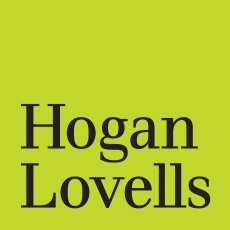On February 16 2012 the Federal Energy Regulatory Commission (FERC) took a decidedly different approach to its regulatory approval for mergers and acquisitions of electric utilities by declining to adopt the 2010 horizontal merger guidelines, issued by the Department of Justice (DOJ) and the Federal Trade Commission (FTC), which raised the thresholds that trigger market-power concerns.
In so doing, FERC reaffirmed its approach to analysing horizontal market power concerns for proposed mergers under Section 203 of the Federal Power Act, using the 1992 horizontal merger guidelines' basic five-step framework, with the addition of the competitive analysis screen that it developed to aid the first step of the analysis.
In declining to adopt the 2010 guidelines, FERC pointed to the unique characteristics of electricity markets that make them more susceptible to the exercise of market power than other markets regulated by the antitrust agencies and, as a result, deemed application of the higher market-power thresholds from the 2010 guidelines inappropriate. FERC also declined to modify its standards for granting market-based rate applications to reflect the 2010 guidelines.
In 1996 FERC adopted the five-step framework from the antitrust agencies' 1992 horizontal merger guidelines as its basic framework for evaluating the competitive effects of proposed mergers in its merger policy statement. In supplementing this framework, FERC adopted a competitive analysis screen which, as part of the first step, evaluates whether the proposed merger would significantly increase concentration in relevant markets. The components of the competitive screen analysis include:
- identifying the relevant products;
- identifying customers that may be affected by the merger;
- identifying potential suppliers of each identified customer (including a delivered price test analysis, consideration of transmission capability and a check against actual trade data); and
- analysing market concentration using the Herfindahl-Hirschman Index (HHI) thresholds from the 1992 guidelines.
According to FERC, this analysis is intended to identify mergers that clearly raise no competitive concerns early in the process.
In 2011 FERC issued a notice of inquiry regarding whether to revise its approach to examining horizontal market power to reflect the 2010 guidelines. The notice highlighted that the 2010 guidelines:
- raised the HHI thresholds for market concentrations; and
- de-emphasised market definition as a starting point for the antitrust agencies' analysis, instead opting for a fact-specific inquiry using a variety of analytical tools.
The notice also addressed how the antitrust agencies analysed partial acquisitions and minority ownership.
After considering the comments submitted in response to the notice, FERC declined to adopt the 2010 guidelines as a means of evaluating proposed mergers. FERC agreed with certain commentators that the more relaxed HHI thresholds in the 2010 guidelines are inappropriate for electricity markets because electricity markets are more susceptible to market power due to the large capital investments necessary for entry, lack of substitutable products, lack of storage and relative inelasticity of demand. Accordingly, FERC elected to retain its five-step framework with the competitive analysis screen for evaluating whether a merger will have an adverse impact on competition.
FERC found that the competitive analysis screen continues to be an important tool for analysing proposed mergers because it provides a standard, conservative check while delivering procedural and analytic certainty to the industry. Despite the concerns that FERC is overly rigid in its application of the competitive analysis screen, FERC maintained that its approach is flexible enough to incorporate aspects of the 2010 guidelines, while retaining the certainty that the current approach provides. FERC reiterated that its merger policy statement allows intervenors and FERC staff to raise issues regarding whether the screen accurately captured market power concerns. FERC also maintained that applicants that fail the market screen could address market conditions beyond the change in HHI, such as demand and supply elasticity, ease of entry and market rules, as well as technical conditions, such as the types of generation involved.
As a practical matter, FERC's decision may subject utility mergers to multiple competitive reviews under different standards. The action may therefore make it more difficult for FERC and either the FTC or DOJ to coordinate competitive reviews on transactions in which both agencies may have jurisdiction. Similarly, the action may impose on the merging parties an obligation to tailor their arguments in support of the transaction to different competitive analyses, while maintaining a consistent position about its market effects.
FERC also declined to modify its approach to market power analysis for market-based rate applications to incorporate the 2010 guidelines. In this regard, FERC noted that its current market-based rate analysis is not explicitly tied to the antitrust agencies' guidelines and its 2,500 HHI threshold is already consistent with the 2010 guidelines. FERC elected to retain its current 20% threshold for indicative screens because it found that this threshold strikes the appropriate balance between having a realistic screen and imposing an undue regulatory burden.
For further information on this topic please contact Janet L McDavid, Michael Yuffee or William L Monts III at Hogan Lovells US LLP by telephone (+1 202 637 5600), fax (+1 202 637 5910) or email ([email protected], [email protected] or [email protected]).
Associates Mustafa Ostrander and Ruth Porter assisted in the preparation of this update.




